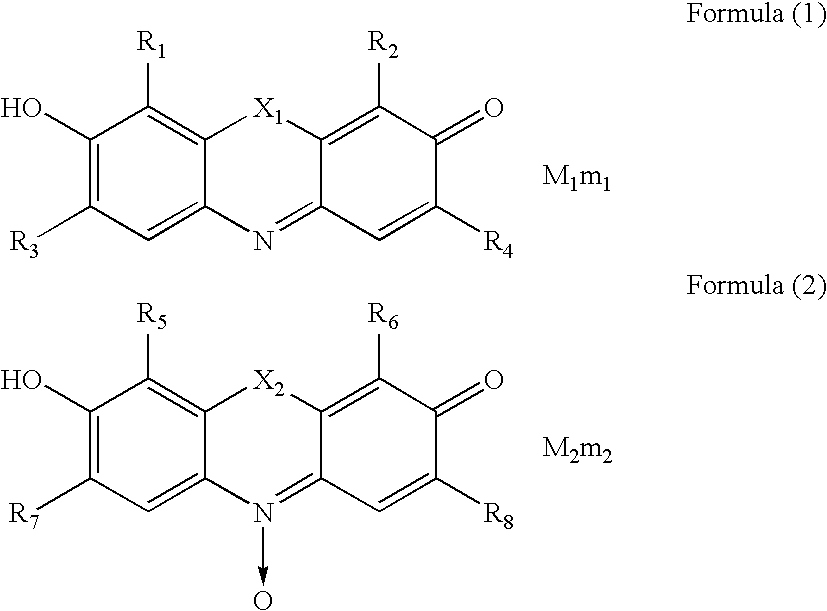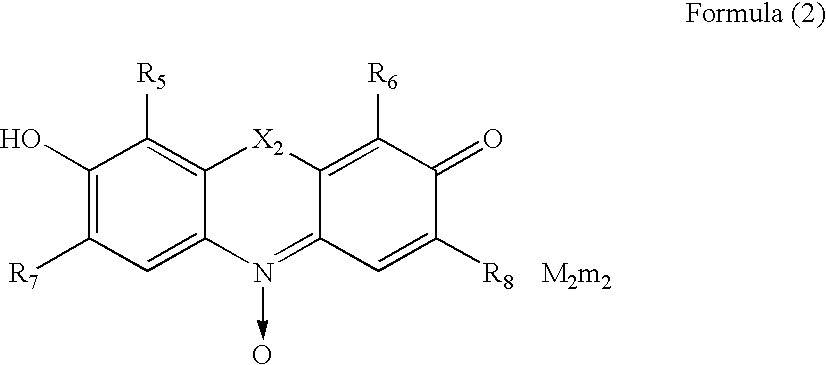Hair-dyeing agent
a dyeing agent and dyeing technology, applied in the direction of acridine dyes, dyeing process, hair cosmetics, etc., can solve the problems of uncontrollable intermediates, inability to achieve the effect of dyeing hair in a fresh tone, and uncontrollable intermediates
- Summary
- Abstract
- Description
- Claims
- Application Information
AI Technical Summary
Benefits of technology
Problems solved by technology
Method used
Image
Examples
example 1
Example Concerning the Dyeing Characteristics of a Dyeing Component
[0057] Each dye described in Table 1 was dissolved in a water-base composition containing an alkaline peroxide, to prepare a hair-dyeing agent having the following formulation, and the resultant hair-dyeing agent was applied to goat hair.
[Formulation]Dye (one described in Table 1)0.2gBenzyl alcohol5.0gSodium lauryl sulfate0.01gAmmonium hydroxide (25 mass %)5.0gHydrogen peroxide (50 mass %)6.0gWaterAmount required for the totalamount to be 100 gpH10.0
[0058] The dye mixture was applied to white goat hair, having no damage, at 27° C. for 18 minutes. The composition having the formulation was applied in an amount of 1.5 to 2.0 g per 1 g of goat hair. After the dyeing time was ended, each bundle of the resultant hairs was washed with water, shampooed, and dried. After that, the color of the bundle of hairs was measured. With respect to each of the examples and comparative examples, the values L*, a*, and b* of the bund...
PUM
| Property | Measurement | Unit |
|---|---|---|
| viscosity | aaaaa | aaaaa |
| color | aaaaa | aaaaa |
| size | aaaaa | aaaaa |
Abstract
Description
Claims
Application Information
 Login to View More
Login to View More - R&D
- Intellectual Property
- Life Sciences
- Materials
- Tech Scout
- Unparalleled Data Quality
- Higher Quality Content
- 60% Fewer Hallucinations
Browse by: Latest US Patents, China's latest patents, Technical Efficacy Thesaurus, Application Domain, Technology Topic, Popular Technical Reports.
© 2025 PatSnap. All rights reserved.Legal|Privacy policy|Modern Slavery Act Transparency Statement|Sitemap|About US| Contact US: help@patsnap.com



